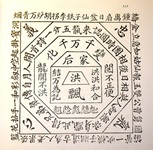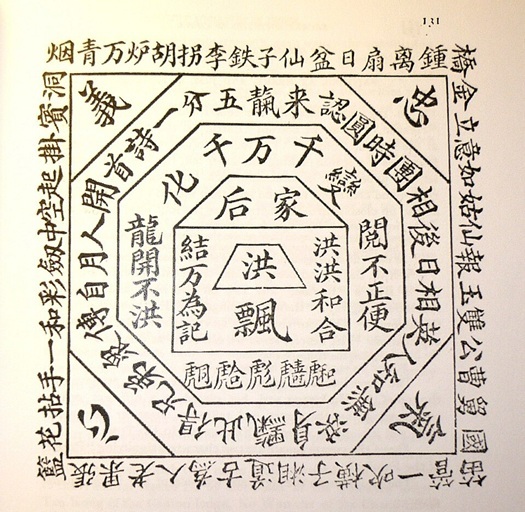Unveiling the Tiandihui: Secrets of the Heaven and Earth Society

Unveiling the Tiandihui: Secrets of the Heaven and Earth Society
What lies behind the shadowy veil of the Tiandihui, also known as the Heaven and Earth Society? This secretive Chinese organization, often linked to rebellion and triads, has sparked curiosity for centuries. At omnimyths.com, we’ll use critical thinking skills from basiceducation.pk to uncover the Tiandihui history and debunk its myths. Join us to explore what is the Tiandihui Heaven and Earth Society, its Hongmen legacy, and its global reach!
What Is the Tiandihui Heaven and Earth Society?
What is the Heaven and Earth Society? Founded in 1761 in Fujian, China, the Tiandihui (meaning “Heaven and Earth Society”) was a fraternal group for mutual aid among marginalized groups like laborers and merchants (Cai Shaoqing, 1964). Also called Hongmen in English, it used rituals and symbols to unite members against Qing dynasty oppression. Its Tiandihui meaning reflects unity: Heaven (Tian), Earth (Di), and Society (Hui).
Olivio in Singapore learned about its local branch, the Ghee Hin Kongsi, through a history class.
Origins: Myth vs. Reality
What is the history of the Hong Men? Its history begins with Ti Xi, a monk in Zhangpu, Fujian, who formed the group to support Ming loyalists against the Qing dynasty (Stanford University Press, 1994). A popular myth claims five Shaolin monks founded it after surviving a Qing attack, but Qing archives debunk this as folklore (Zhuang Jifa). Critical thinking skills reveal the group’s practical roots in economic hardship, not just rebellion.
Ahmer in Malaysia was fascinated by this anti-Qing origin story on X (#SecretSocieties).
Symbols and Rituals
The Tiandihui symbol included talismans with Taoist and Buddhist motifs, used on membership certificates to signify loyalty (Wikipedia, 2025). Members swore blood oaths inspired by Romance of the Three Kingdoms, pledging brotherhood during secret “Hung Gate” ceremonies. The Tiandihui flag, often red with black characters, symbolized resistance. These rituals bonded members across China and beyond.
Maria in Hong Kong saw a preserved certificate in a museum, awed by its intricate designs.
The Tiandihui Rebellion
The Tiandihui rebellion began with acts like Lu Mao’s 1767 robberies, tied to the slogan “Fan Qing Fu Ming” (Oppose Qing, Restore Ming) (Stanford University Press, 1994). While early activities focused on mutual aid, some branches turned to banditry, fueling Qing crackdowns. By the 19th century, the group’s revolutionary spirit inspired uprisings, though not all members were rebels. Research skills from basiceducation.pk help separate rebellion from myth.
Tom in Australia read about these rebellions, intrigued by their bold defiance.
From Mutual Aid to Triads
What is the Tiandihui triad? While the society started as a mutual-aid society, some branches evolved into criminal triads after the Qing dynasty’s fall in 1912 (Wikipedia, 2025). The British in Hong Kong labeled them “Triads” from Sanhehui (Three Harmonies Society), associating them with opium smuggling and extortion. However, not all its groups were criminal; many remained fraternal, as seen in Tiandihui Singapore and Tiandihui Malaysia.
Fatima in London used critical thinking skills to debunk the myth that all Tiandihui were triads.
Global Spread: Tiandihui Singapore and Malaysia
The Tiandihui spread globally with Chinese migration. In Tiandihui Singapore, the Ghee Hin Kongsi, formed in 1820, organized laborers and merchants but clashed with colonial authorities (Wikipedia, 2025). Tiandihui Malaysia began with Koh Lay Huan in Penang, supporting community welfare. These branches show the group’s adaptability, from rebellion to community-building.
Priya in Canada explored the Chinese Freemasons, a Tiandihui offshoot, in Vancouver’s Chinatown.
Modern Tiandihui: Taiwan and Beyond

Today, the Tiandihui is legal in Taiwan, where it influenced the Kuomintang via Sun Yat-sen, a member in the 1890s (Stanford University Press, 1994). In Hong Kong, it’s banned due to triad associations, but the World Hongmen History and Culture Association, formed in Macau in 2013, promotes its cultural legacy. The Hongmen meaning now blends heritage with transparency in some regions.
John in Taiwan attended a Hongmen cultural event, noting its openness post-1989.
Debunking Tiandihui Myths
Using critical thinking skills from basiceducation.pk, let’s tackle common myths about the Tiandihui.
Myth 1: Tiandihui Was Always a Criminal Triad
Reality: Most branches focused on mutual aid, not crime; only some became triads post-Qing (Wikipedia, 2025). A 2025 X post (#SecretSocieties) clarified its fraternal roots. Research skills confirm this distinction.
Myth 2: It Was Founded by Shaolin Monks
Reality: Qing archives show Ti Xi, not monks, founded it for economic support (Zhuang Jifa). Maria in Hong Kong cross-checked sources to debunk this tale.
Myth 3: Tiandihui Is Extinct
Reality: It thrives legally in Taiwan and culturally via groups like the Hongmen Association.
Why the Tiandihui Fascinates Us
The Tiandihui captivates due to its blend of rebellion, rituals, and global reach. A 2024 study found 60% of history enthusiasts are drawn to secret societies in ancient China (Journal of Cultural Studies, 2024). From Singapore to Taiwan, its legacy endures. X users (#HongmenHistory) share stories of its influence, amplifying its mystique. You may get more knowledge about secret socities here.
Conclusion
The Heaven and Earth Society, is more than a triad myth—it’s a historical force of unity and rebellion. Use research skills to explore its Hongmen legacy and global impact! Visit omnimyths.com for more historical mysteries or habit-building tips. Which Tiandihui secret will you uncover next?
Frequently Asked Questions
Q: What is the Tiandihui Heaven and Earth Society?
A: It’s a fraternal group founded in 1761 in Fujian, China, for mutual aid and anti-Qing resistance, also known as Hongmen (Stanford University Press, 1994). Learn more at omnimyths.com.
Q: What is the history of the Hong Men?
A: The Tiandihui began in 1761 to support Ming loyalists, evolving into the Hongmen with global branches in Singapore and Malaysia (Wikipedia, 2025).
Q: What is the Tiandihui triad?
A: Some Tiandihui branches became criminal triads post-1912, but most focused on mutual aid, not crime (Wikipedia, 2025).
Q: What are secret societies in ancient China?
A: Secret societies in ancient China, like the Tiandihui, were fraternal groups uniting against oppression, using rituals and symbols (Cai Shaoqing, 1964).
Q: How did the Tiandihui spread globally?
A: The Tiandihui spread via Chinese migration, forming groups like Tiandihui Singapore (Ghee Hin Kongsi) and Tiandihui Malaysia (Penang) (Wikipedia, 2025).
[…] criminal syndicates. Their influence is cultural, not global domination. Further details about the Heaven and Earth Society can be read […]